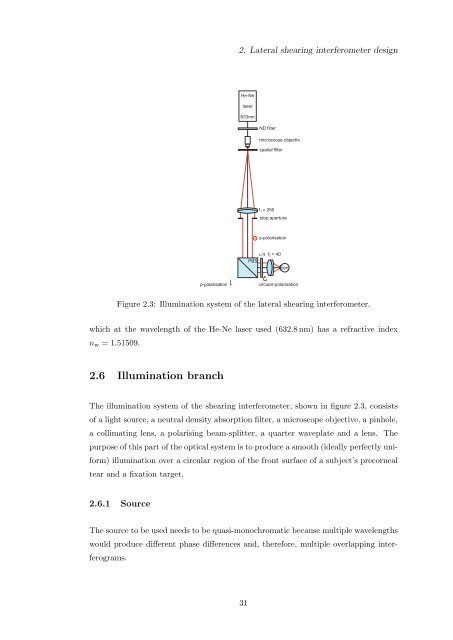Alfredo Dubra's PhD thesis - Imperial College London
Alfredo Dubra's PhD thesis - Imperial College London
Alfredo Dubra's PhD thesis - Imperial College London
Create successful ePaper yourself
Turn your PDF publications into a flip-book with our unique Google optimized e-Paper software.
2. Lateral shearing interferometer design<br />
He-Ne<br />
laser<br />
633nm<br />
ND filter<br />
microscope objective<br />
spatial filter<br />
f = 250<br />
1<br />
stop aperture<br />
s-polarisation<br />
l/4 f 2 = 40<br />
PBS<br />
eye<br />
p-polarisation<br />
circular-polarisation<br />
Figure 2.3: Illumination system of the lateral shearing interferometer.<br />
which at the wavelength of the He-Ne laser used (632.8 nm) has a refractive index<br />
n w = 1.51509.<br />
2.6 Illumination branch<br />
The illumination system of the shearing interferometer, shown in figure 2.3, consists<br />
of a light source, a neutral density absorption filter, a microscope objective, a pinhole,<br />
a collimating lens, a polarising beam-splitter, a quarter waveplate and a lens. The<br />
purpose of this part of the optical system is to produce a smooth (ideally perfectly uniform)<br />
illumination over a circular region of the front surface of a subject’s precorneal<br />
tear and a fixation target.<br />
2.6.1 Source<br />
The source to be used needs to be quasi-monochromatic because multiple wavelengths<br />
would produce different phase differences and, therefore, multiple overlapping interferograms.<br />
31

















